Exterior cladding – a guide to how to clad your home and the rules to follow
The overcoat to your home, this important external layer is what gives the house its character

There are numerous reasons why you might want to add exterior cladding to your home. It might be because your a fan of the weather board look so popular in the US. Or perhaps you are just looking for a way to cover unsightly pebbledash on a period property.
Discover more ways to transform your home with our project planning advice
This is a growing home renovation trend, and our guide on exterior cladding will allow you to create the perfect look, whatever or wherever your home is.
What is exterior cladding?
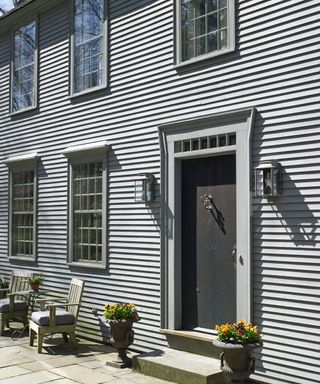
Cladding is the skin of your house – it’s the outer layer that helps to insulate and protect it from the elements, and it enhances your home’s appearance, too. Brick, stone and render are familiar options, with timber weatherboarding, vertical tiling, flint, metal and modern synthetic materials used less frequently.
Want more project advice and planning tips? Read: How to build an extension
What materials can you use for exterior cladding?
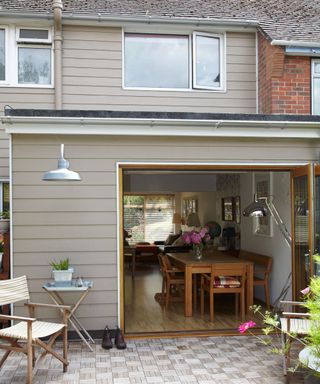
It has become quite fashionable to use more than one cladding material – this could take the form of combining timber with render or brickwork panels, to something altogether more modern.
That said, the more finishes you add, the more complex your design becomes. Not only will you need to buy relatively small quantities of materials, and possibly employ several different trades, but junctions between materials will need to be considered, too.
1. Brickwork
Exposed bricks are the most popular choice, but how they’re made will affect their look, qualities and price. Your bricklayer should discuss bonding patterns, mortar colours and joint details with you.
2. Stone
This natural material isn’t a budget option, but there are less expensive artificial or reconstituted alternatives available, too.
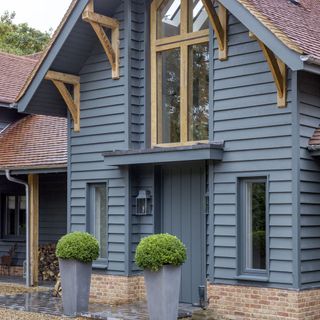
3. Timber cladding
While timber needs more maintenance than stone or brickwork, it is cheaper. Oak and cedar may be left untreated to weather to a silver-grey, while softwood boarding usually needs painting or staining.
4. Composite weatherboard
Although composite weatherboarding usually costs more than timber, it is often pre-finished, will not warp or twist and is extremely fire resistant.
5. Metal
Zinc, copper, stainless steel or aluminium are ideal for modern builds, as they’re striking, malleable and lightweight. They’re also quick to put up and are highly resilient.
What are the rules for cladding a house?
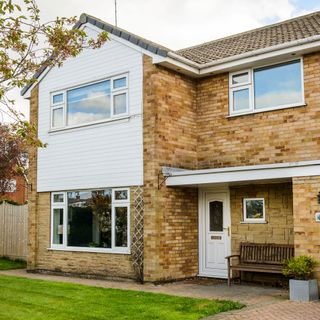
You don’t usually need to apply for planning permission for repairs, maintenance or minor improvements, such as painting your house, but if you live in a sensitive location such as a conservation area, you will need permission before completely changing the cladding.
If you want to re-render or replace timber cladding to external walls, building regulations may also apply depending on the extent of the work. Cladding can contribute to the spread of fire, so always liaise with building control and planners for advice.
Related: Planning permission – everything you need to know
Will you be incorporating exterior cladding on your home?
Get the Ideal Home Newsletter
Sign up to our newsletter for style and decor inspiration, house makeovers, project advice and more.

Amy Cutmore is an experienced interiors editor and writer, who has worked on titles including Ideal Home, Homes & Gardens, LivingEtc, Real Homes, GardeningEtc, Top Ten Reviews and Country Life. And she's a winner of the PPA's Digital Content Leader of the Year. A homes journalist for two decades, she has a strong background in technology and appliances, and has a small portfolio of rental properties, so can offer advice to renters and rentees, alike.
-
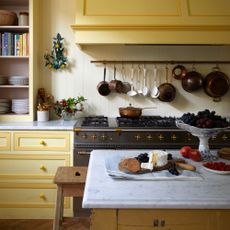 6 tricks I use to display pans in a kitchen as an interior stylist that are both practical and pretty
6 tricks I use to display pans in a kitchen as an interior stylist that are both practical and prettyShow off pots and pans in style with these smart ideas
By Laurie Davidson
-
 I used to spend a fortune on fresh basil - but this £99 device has turned my kitchen worktop into an indoor herb garden
I used to spend a fortune on fresh basil - but this £99 device has turned my kitchen worktop into an indoor herb gardenHow does this tiny indoor garden work?
By Molly Cleary
-
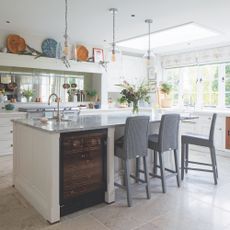 A smart reno turned this disjointed house into a dream home
A smart reno turned this disjointed house into a dream homeThe warren of rooms is now spacious and full of style
By Marisha Taylor